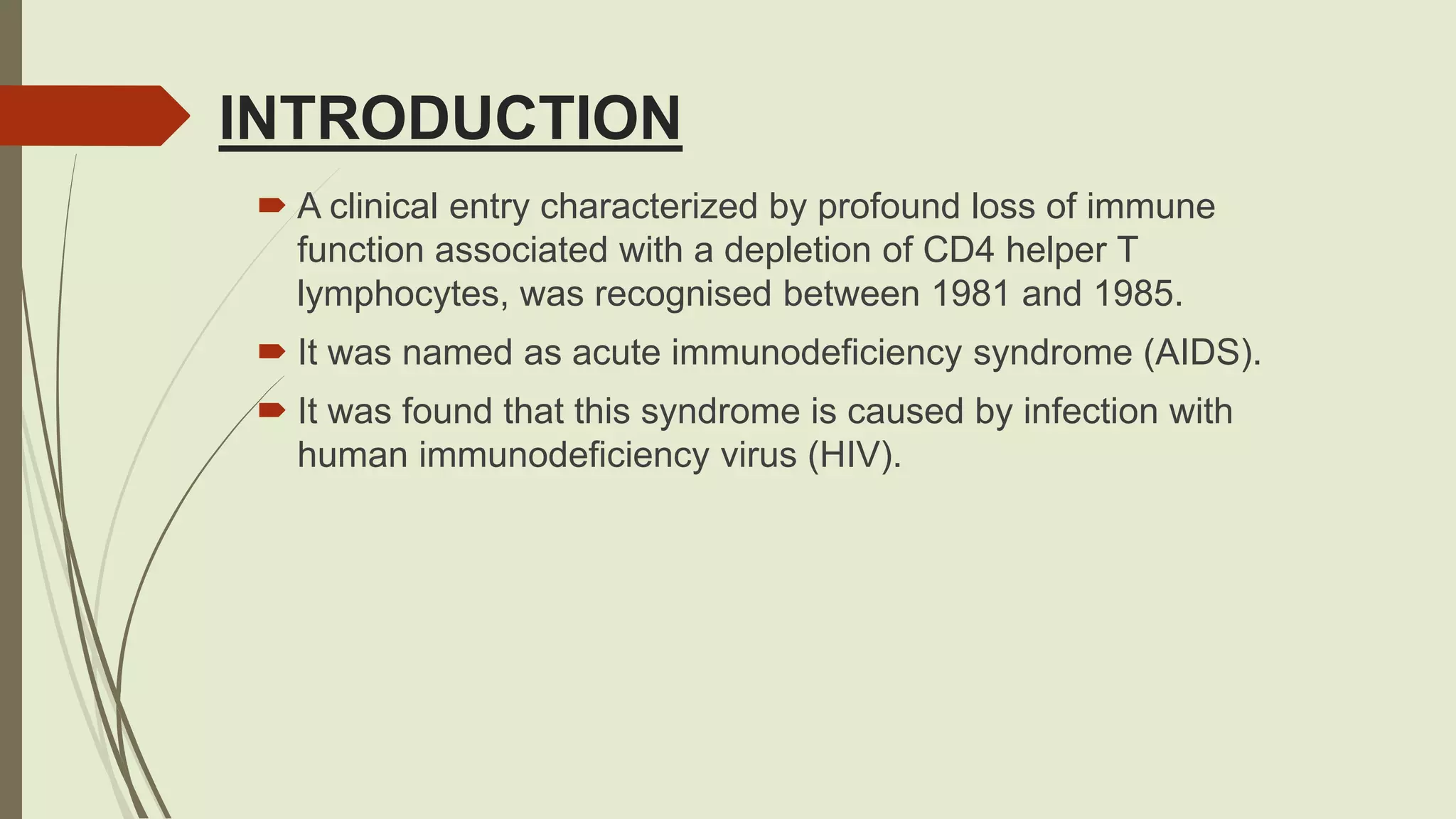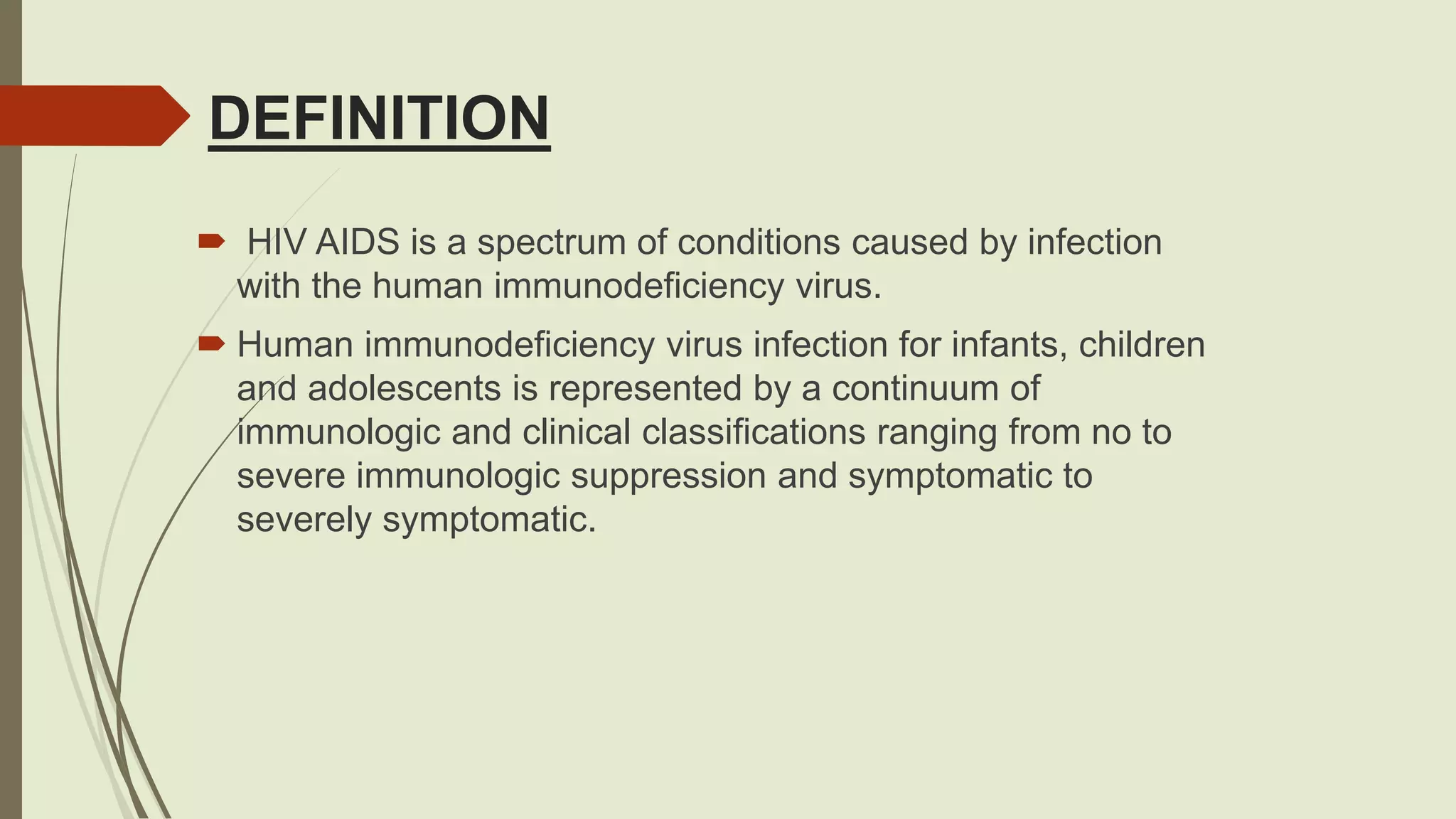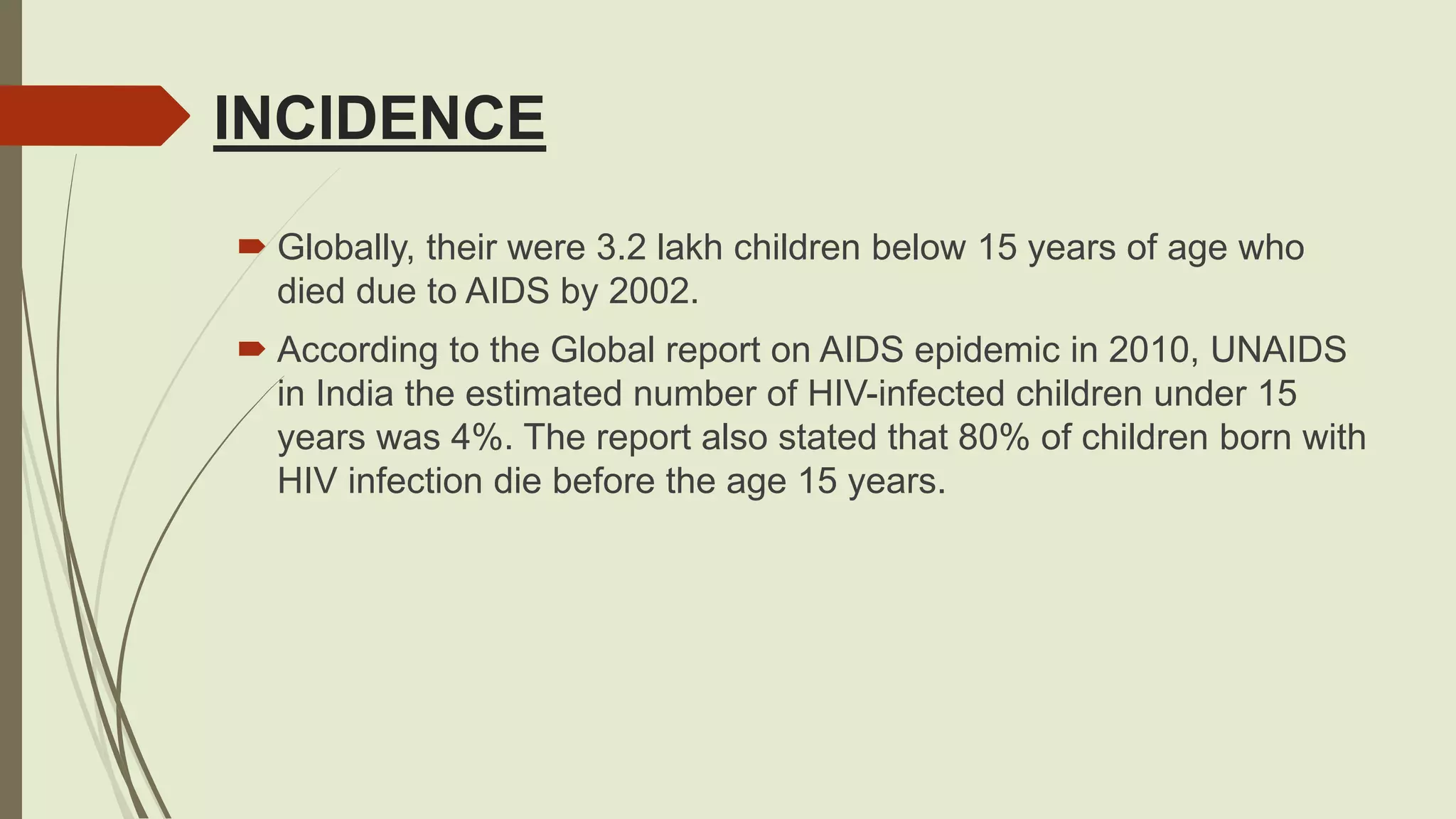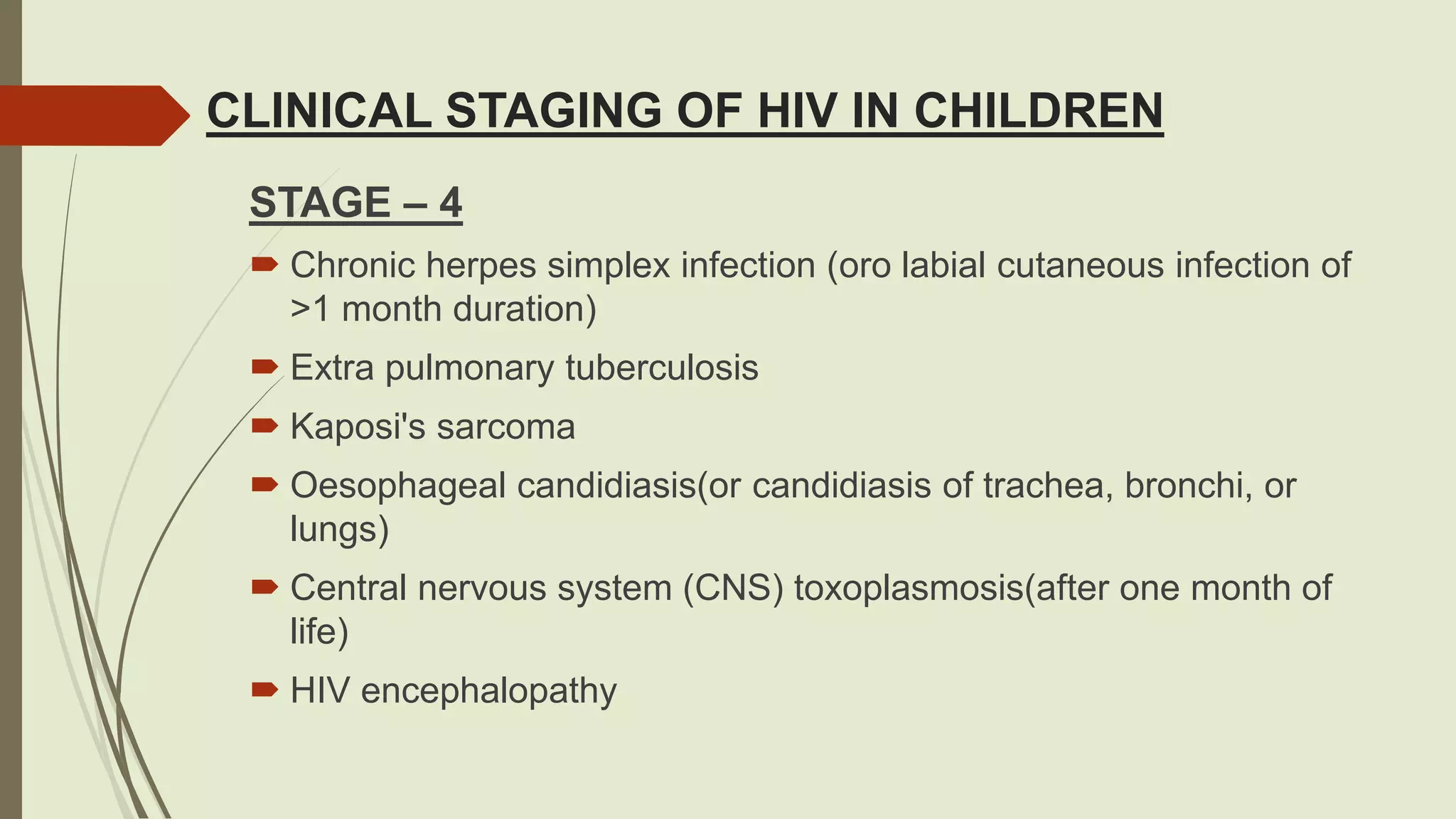Acquired immunodeficiency syndrome (AIDS) is a clinical condition caused by the human immunodeficiency virus (HIV), leading to a severe reduction in immune function, particularly affecting CD4 T lymphocytes. The document discusses the modes of HIV transmission, clinical features, stages of infection in children, and highlights the importance of antiretroviral therapy for managing HIV-infected children. It also emphasizes prevention strategies for mother-to-child transmission and nursing care specific to pediatric patients with AIDS.























